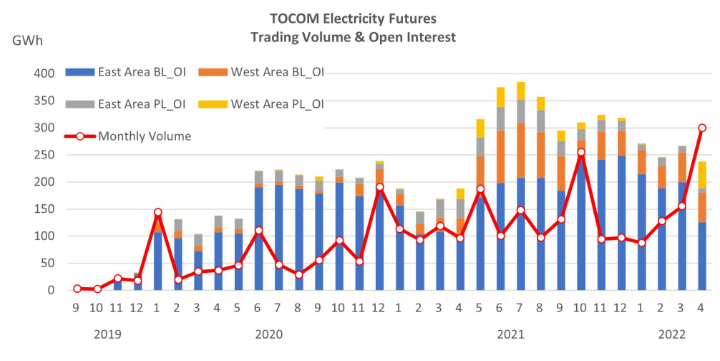TOCOM Energy
Global crude oil Inventory drops may set stage for higher prices and volatility
Crude oil futures raced higher on Tuesday to touch an eight-month high amid a broad risk-on tone across markets, while Saudi Arabia and Russia have agreed to extend their voluntary oil production cuts through the end of this year.
Intermonth spreads were higher than the previous week with JPX Dubai prompt month and third month spread last traded at around 2.5$/b.
This is in line with a steep drop in crude oil stocks over the last couple of months. OPEC cut efforts combined with still resilient demand than most think are leading to a steep drop in crude oil stocks in onshore tanks and on the water, according to tracking data from Vortexa and Refinitive.
As of August the implied crude shortfall has accelerated with the latest 4-week average showing draws of close to 5mbd. About 2mbd come from onshore tanks, and an even bigger figure is emerging for crude oil at sea. When oil inventories are low, prices and volatility tend to be higher.
The following table shows crude output by the OPEC in August and July, according to a Reuters survey published last week.
The 10 OPEC members bound by the deal maintained strong compliance with agreed cutbacks and extra voluntary reductions. OPEC’s output is still undershooting the targeted amount by almost 800,000 bpd mainly because Nigeria and Angola lack the capacity to pump as much as their agreed level. Top exporter Saudi Arabia kept August output around 9 million bpd as the country extended a voluntary 1 million bpd output cut for a second month to provide extra support for the market. Despite ongoing cuts, OPEC oil production rose in August as Nigeria and Iran’s production increased, largely offsetting Saudi Arabia’s cuts. It is likely that OPEC’s oil production will hold broadly steady during the rest of the year.
On the demand side, US jobs report, the rollout of fresh stimulus measures in China has supported sentiment.
Last Friday’s US jobs report which showed the unemployment rate ticked up in August while a healthy 187,000 jobs were added marked the latest evidence that the economy, while still resilient, is beginning to cool, underpinning hopes the Federal Reserve will hit pause on rate hikes at its next meeting later this month.
On the Chinese side, in addition to recent economic stimulus plan, the market is also focused on the issuance of the third batch of refined oil product quotas. As we move toward autumn and winter, seasonally we could see weakened demand for gasoline and increase buying for diesel. Whether China maintains strength in crude buying will largely depend on whether its refiners continue to export large volumes of diesel.
The third batch of export quota for refined oil products totaling 12 million mt is larger-than-expected. This should be enough to counteract refineries elsewhere entering an elevated maintenance period during September and October, resulting in expected downward pressure on diesel cracks. However, accelerating refinery processing will simply push the shortage upstream from the fuel market to the crude market, supply and demand for crude east of the Suez Canal will be relatively tight, Dubai crude oil price will continue to show its strength relative to Brent.






